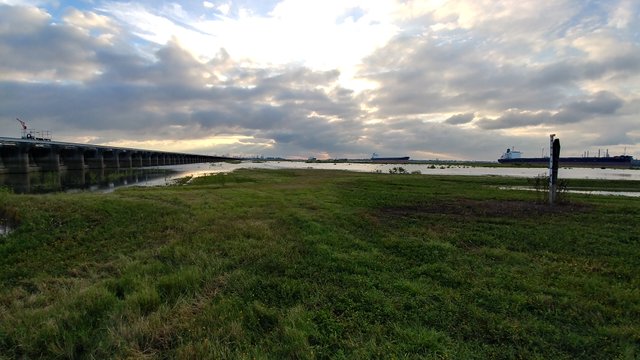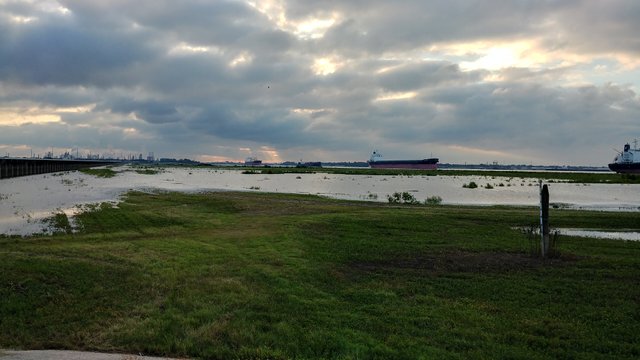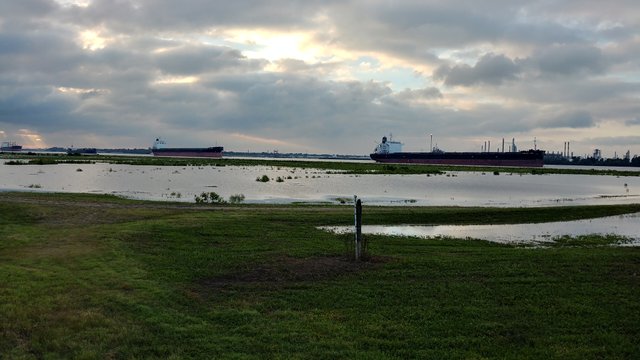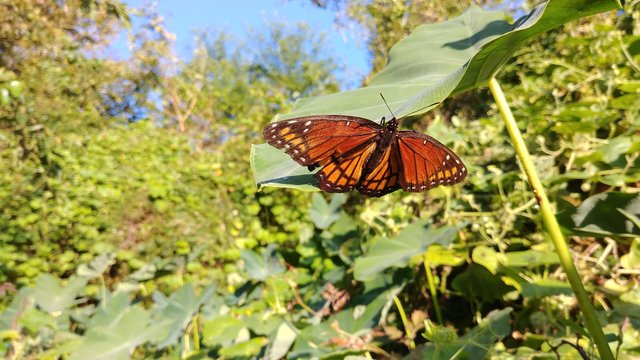Bonnet Carré Spillway Wildlife - New Orleans
The Bonnet Carré Spillway

The Bonnet Carré Spillway is used to protect against floods in the Lower Mississippi Valley. It's located about 12 miles west of New Orleans. The spillway's construction began in 1927 due to a panic that the city would flood and was completed in 1931. When needed, wood blocks called needles are removed to allow water to flow 6 miles to Lake Pontchartrain. The spillway, however, has only been used a total of 12 times since its opening. Out of those 12 times only 5 required 100% of the bays to be opened. The last time it was used was actually this year, 2018, with 48% of the needles being open.
Currently the surrounding area has other purposes as well. There are several trails around the area that serve for walking, hiking, and biking. Other popular recreational activities in the area include mudding, hunting, fishing, and bird watching. Right across the street from the spillway there is also a playground and baseball field.

One of the strange parts of the Bonnet Carré Spillway is the massive cargo boats going up the Mississippi and the chemical plants littered in the background which clashes with the natural landscape.

While I was at the Bonnet Carré Spillway I took time to identify bird species in the area.
The most common one noted was the White Ibis (Eudocimus albus).
There was a whole flock feeding in the Mississippi water right next to the spillway on the marshy shore like the picture below. It is a fairly common bird to find in Louisiana all year long, and it about the size of a crow for reference. The Ibises walked around slowly poking their long beak into the mud searching for insects and crustaceans. Their longer legs allow them to forage in shallow areas.

The bird was identifiable via its thin orange legs, curved orange beak, and black tipped wings.
There were also what seemed to be two juvenile members of the flock.
The brown coloration of the picture above may lead you to believe it is a female, but the male and female of this species are both white. The picture above is a of juvenile.
Another bird observed was the Common Egret(Ardea alba). The thin straight beak and long S-shaped neck are identifiable aspects of this bird. The bird was observed standing still near on the land near the shore. This is a common behavior as they hunt by standing or walking in shallow water in search of fish, frogs, or other small aquatic animals. There were also more White Ibises hunting near the Common Egret.

Here is another observed animal in the area. This may seem like a Monarch, but it is actually only a mimic. It's a Viceroy. The black curved line across the hind wings give it away. In case you don't know the Viceroy mimics the color patter of the Monarch because the Monarch is unpalatable due to milkweed they consume as larvae. A bird that eats a Monarch will throw it up and remember not to catch a butterfly that looks like that again, so the Viceroy benefits because predators believe they will become sick if the eat a palatable Viceroy.
It was a great experience to visit Bonnet Carré Spillway and learning more about it's important function in the lower Mississippi Valley. Observing the birds made me think about the adaptive values of the traits How the longer legs of both of the observed birds allows for wading in shallow water in hunt of food, and the contrast between a hunting beak of the Common Egret and the more probing beak of the White Ibis. I hope you guys enjoyed this post which is a pretty sharp contrast from the usual gaming posts, but I thought I had some pretty great photography and information to share with everyone. Drop an upvote and some feedback if you enjoyed!
-Schubes



You got a 42.43% upvote from @ocdb courtesy of @schubes!
@ocdb is a non-profit bidbot for whitelisted Steemians, check our website https://thegoodwhales.io/ for the whitelist, queue and delegation info. Join our Discord channel for more information
If you like what @ocd does, consider voting for ocd-witness through SteemConnect or on Steemit Witnesses
Hi, @schubes!
You just got a 11.9% upvote from SteemPlus!
To get higher upvotes, earn more SteemPlus Points (SPP). On your Steemit wallet, check your SPP balance and click on "How to earn SPP?" to find out all the ways to earn.
If you're not using SteemPlus yet, please check our last posts in here to see the many ways in which SteemPlus can improve your Steem experience on Steemit and Busy.
Congratulations,
you just received a 13.51% upvote from @steemhq - Community Bot!
Wanna join and receive free upvotes yourself?

Vote for
steemhq.witnesson Steemit or directly on SteemConnect and join the Community Witness.This service was brought to you by SteemHQ.com
The pictures turned out beautifully! It was really interesting to see the different species and learn more about the function of the spillway. Hope to see more wildlife/environmental posts from you!